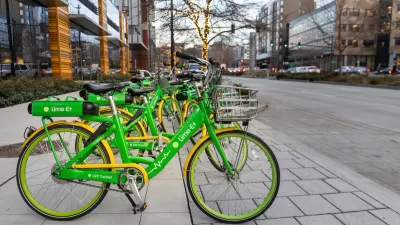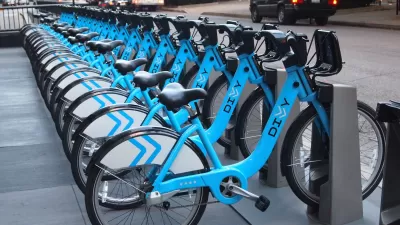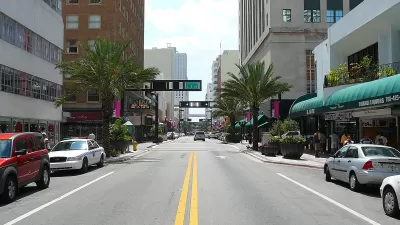Eight years after shared e-scooters were first introduced in US cities, the industry still teeters on the edge of success, hindered in part by limited infrastructure.

What’s the status of the U.S. e-scooter industry eight years after its launch? Syris Valentine assesses the landscape in an article for Grist, writing that “The true climate benefits of these fleets depends upon how companies deploy and manage them, and safety remains a concern as injuries climb. But industry leaders appear intent on ensuring their scooters are as sustainable and safe as possible.”
According to Valentine, researchers say that the two biggest factors that will determine the climate impact of scooters are how users ride them and how operators manage them throughout their life cycle.
If scooter rides replace walking, their impact on emissions will be minimal. “But several studies, including one by the Portland Bureau of Transportation and another, funded by Lime, by a German research institute, have found that though anywhere from a third to well over half of scooter users would have walked instead, enough other trips that would have been taken by car were not.” However, the energy and infrastructure — including large cargo vans — required to manage and redistribute scooters in many urban environments can negate some of their environmental benefits.
Meanwhile, the lack of safe infrastructure in most U.S. cities is a bigger obstacle that e-scooter operators don’t have control over: “with most American cities designed to promote cars over all other forms of transit, the health of scooter users is, like those of pedestrians and cyclists, at risk once wheels hit pavement.”
FULL STORY: 8 years into America’s e-scooter experiment, what have we learned?

Alabama: Trump Terminates Settlements for Black Communities Harmed By Raw Sewage
Trump deemed the landmark civil rights agreement “illegal DEI and environmental justice policy.”

Planetizen Federal Action Tracker
A weekly monitor of how Trump’s orders and actions are impacting planners and planning in America.

The 120 Year Old Tiny Home Villages That Sheltered San Francisco’s Earthquake Refugees
More than a century ago, San Francisco mobilized to house thousands of residents displaced by the 1906 earthquake. Could their strategy offer a model for the present?

Opinion: California’s SB 79 Would Improve Housing Affordability and Transit Access
A proposed bill would legalize transit-oriented development statewide.

Record Temperatures Prompt Push for Environmental Justice Bills
Nevada legislators are proposing laws that would mandate heat mitigation measures to protect residents from the impacts of extreme heat.

Downtown Pittsburgh Set to Gain 1,300 New Housing Units
Pittsburgh’s office buildings, many of which date back to the early 20th century, are prime candidates for conversion to housing.
Urban Design for Planners 1: Software Tools
This six-course series explores essential urban design concepts using open source software and equips planners with the tools they need to participate fully in the urban design process.
Planning for Universal Design
Learn the tools for implementing Universal Design in planning regulations.
Clanton & Associates, Inc.
Jessamine County Fiscal Court
Institute for Housing and Urban Development Studies (IHS)
City of Grandview
Harvard GSD Executive Education
Toledo-Lucas County Plan Commissions
Salt Lake City
NYU Wagner Graduate School of Public Service





























